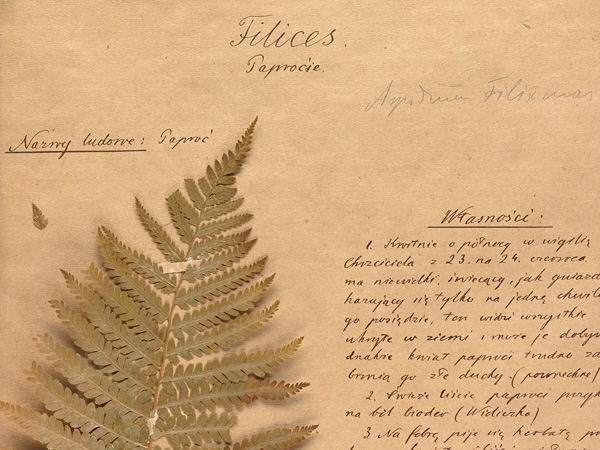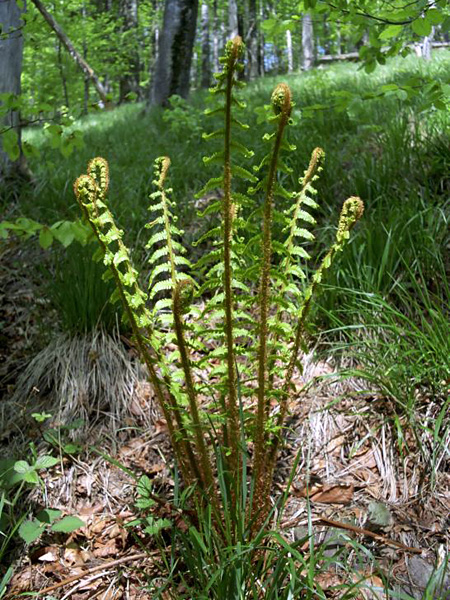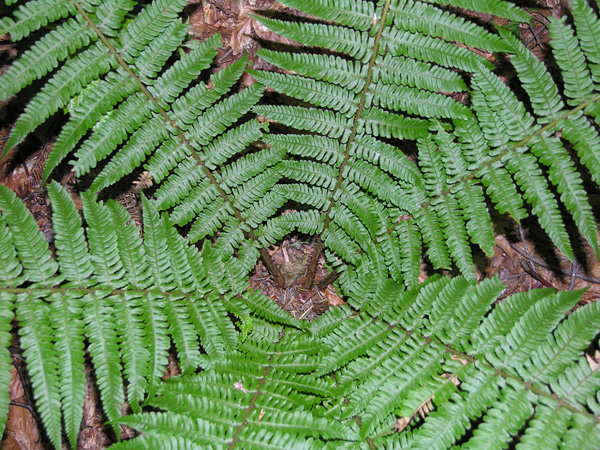The legend of the fern flower in Seweryn Udziela's Herbarium
The shortest night of the year is upon us. Our pre-Christian ancestors called it Kupala Night. It marked the beginning of summer, which was celebrated with dancing, singing, and burning magical herbs. The boys showed off by jumping over the fire, and the girls were letting wreaths on the water. They also searched for a fern flower, which in fact did not exist, but was a pretext for love meetings, which the elders tacitly allowed. The Catholic Church tried to eradicate the pagan holiday from tradition. Unable to do so, it assimilated it with Christian rituals, moving its celebrations first to the vicinity of Pentecost, and then (closer to their original date) to the eve of St. John the Baptist on June 23.
An interesting fact is that the legend of the fern flower related to Kupala Night can be found in our Herbarium collections. It was recorded by Seweryn Udziela in his collection on a card entitled "Filices – ferns" and reads as follows:
"It blooms at midnight on the eve of St. John the Baptist from June 23 to 24. The flower is small, shining like a star and showing itself only for one moment. Whoever possesses it sees all the treasures hidden in the earth and can draw them. However, the fern flower is hard to get because evil spirits protect it."
Udziela added a leaf of the male fern Dryopteris filix-mas (L.) Schott to the card. It is a common species found in Polish forests.
Botanically, the organ (or rather a form) of a fern that fulfils the role of a flower (and thus enables sexual reproduction) is the gametophyte, called a prothallus in this group of plants. However, it is small and inconspicuous, usually a few millimetres in size, and dies quickly when, after fertilization, a sporophyte grows out of it, i.e. the form of fern that we all know very well. It would be hard for it to compete with a beautiful, visible from afar flower from legends...
The Herbarium of Seweryn Udziela (1857–1937) "covering plants used for medicinal purposes by the peasants of Podgórze and Wieliczka counties" is a unique ethnobotanical collection documenting the author's research conducted probably in the 1890s in a number of villages near Kraków. Although from the botanical point of view, it is not distinguished by the completeness of the collected material and the quality of the data (some plants were not collected or preserved, the places and dates of collection are missing, some identification is debatable, wrong or missing, outdated nomenclature), it is a collection of high ethnographic and linguistic value. On 146 cards, Udziela wrote down local names and uses (not only medicinal but also ritual, magical, etc.) of wild-growing or cultivated "folk taxa", which are botanically species, groups of close species, genera or larger groups (like "Filices – ferns"). The collection is stored in the KRAM Herbarium of vascular plants as a separate historical collection.
We invite you to explore the online version of Seweryn Udziela's Herbarium .
We also encourage you to read Piotr Köhler's article on Udziela's Herbarium (in Polish).

A fragment of the Udziela's Herbarium card "Filices – ferns" with a specimen identified as Dryopteris filix-mas (L.) Schott.
Source: KRAM, RCIN.

The title page of the Udziela's Herbarium.
Source: KRAM, RCIN.

A prothallus of the male fern Dryopteris filix-mas agg.
Photo: Wojciech Paul.

The male fern Dryopteris filix-mas agg.
Photo: Wojciech Paul.

The male fern Dryopteris filix-mas agg.
Photo: Wojciech Paul.






